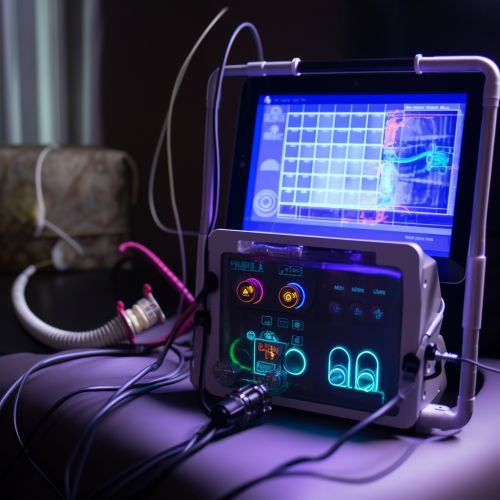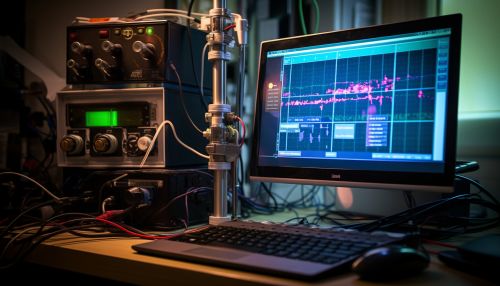Biofeedback
Introduction
Biofeedback is a technique used to help individuals learn to control their body's functions, such as heart rate, blood pressure, muscle tension, and skin temperature. This method is often used in conjunction with other treatments and therapies to manage conditions like chronic pain, high blood pressure, and anxiety.
History
The concept of biofeedback has its roots in the early 20th century when researchers began to explore the idea that humans could control their physiological processes. The term "biofeedback" was coined in the late 1960s by a group of researchers led by Dr. Barry Sterman, who were studying the ability of cats to control their brain waves. Their research showed that the cats could change their brain wave patterns when given a reward, a concept that was later applied to humans.
Types of Biofeedback
There are several types of biofeedback, each focusing on a different physiological function. These include:
- Heart rate variability biofeedback (HRV): This type of biofeedback focuses on controlling the heart rate. It is often used to manage conditions like arrhythmia and hypertension.
- Electromyography (EMG): EMG biofeedback is used to measure muscle tension and relaxation. It is often used in the treatment of conditions like chronic pain and muscular dystrophy.
- Thermal biofeedback: This type of biofeedback measures skin temperature. It is often used to manage conditions like Raynaud's disease and migraine headaches.
- Neurofeedback (EEG): Neurofeedback focuses on the brain's electrical activity. It is often used to manage conditions like epilepsy and attention deficit hyperactivity disorder (ADHD).


How Biofeedback Works
Biofeedback works by using sensors attached to the body to measure various physiological functions. These measurements are then displayed on a screen, allowing the individual to see their body's responses in real time. With the help of a trained biofeedback therapist, the individual can then learn to control these functions, often through relaxation techniques, visualization, or other mental exercises.
Uses and Benefits
Biofeedback has been used to manage a wide range of health conditions, including chronic pain, high blood pressure, anxiety, and more. It is often used in conjunction with other treatments, such as medication or psychotherapy. Some of the benefits of biofeedback include:
- Improved self-awareness: Biofeedback can help individuals become more aware of their body's responses to stress or other stimuli, allowing them to better manage their symptoms.
- Non-invasive treatment option: Biofeedback is a non-invasive treatment option, making it a good choice for individuals who are unable or unwilling to use medication or undergo surgery.
- Reduced reliance on medication: By learning to control their body's functions, individuals may be able to reduce their reliance on medication for certain conditions.
- Improved quality of life: By managing their symptoms more effectively, individuals may see an improvement in their overall quality of life.
Limitations and Risks
While biofeedback can be beneficial for many individuals, it is not without its limitations and risks. These include:
- Time and commitment: Biofeedback often requires multiple sessions over a period of weeks or months, which can be time-consuming and costly.
- Not a cure-all: While biofeedback can help manage symptoms of certain conditions, it is not a cure and should not be used as a substitute for other treatments.
- Potential for over-reliance: There is a risk that individuals may become overly reliant on biofeedback, neglecting other important aspects of their health and wellbeing.
Future Research
Research into biofeedback is ongoing, with scientists exploring its potential use in a variety of areas. Some of the current areas of research include the use of biofeedback in managing chronic pain, improving athletic performance, and treating mental health conditions like PTSD and depression.
